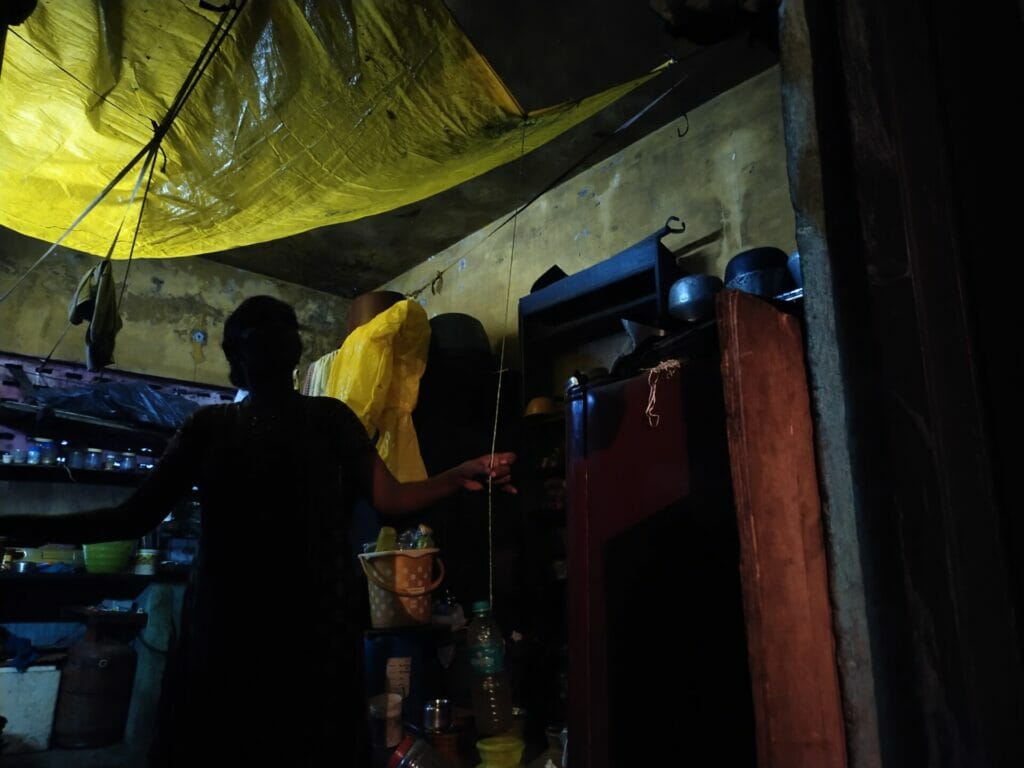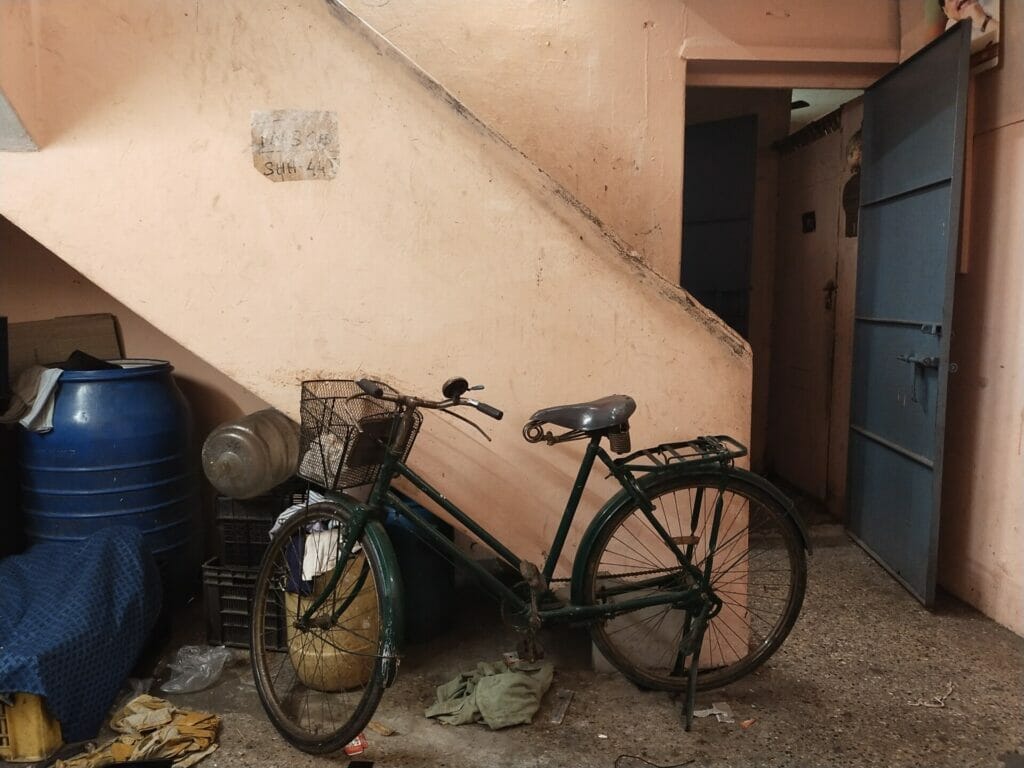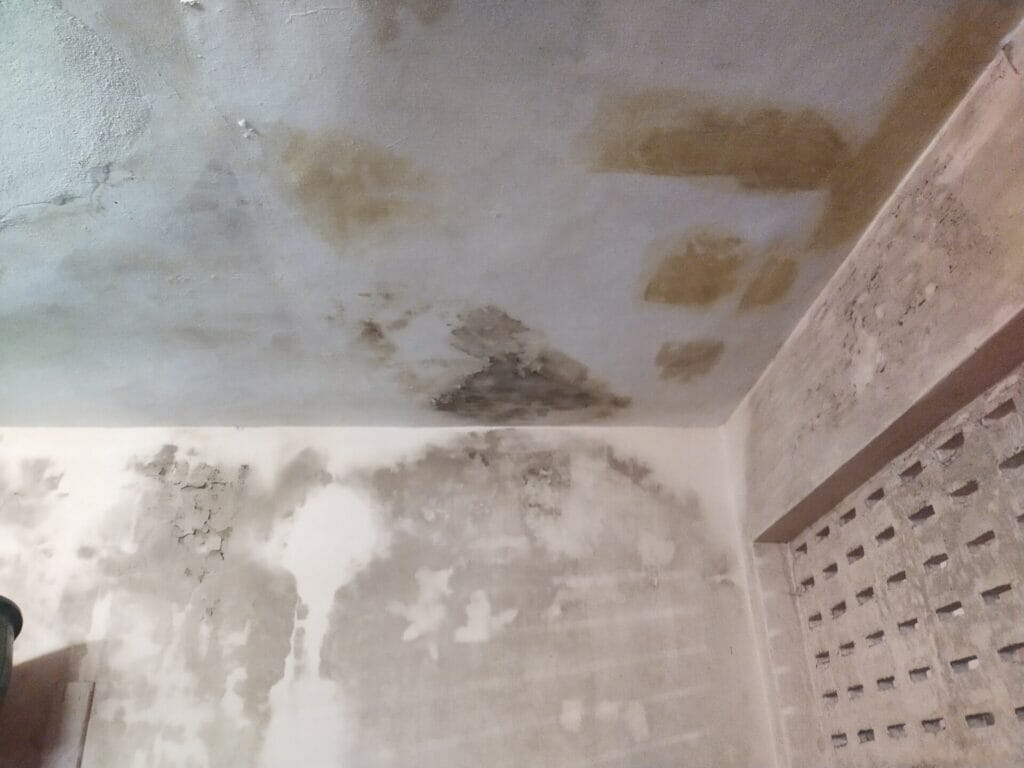A year ago while I was looking into the spate of evictions in Chennai, I came across the heart-wrenching story of 115 families in Kannappar Thidal.
Around 62 families, who were living on the streets near the Ripon building, were evicted in 2002 by the Greater Chennai Corporation (GCC) as their presence was found to be an obstacle to the then-ongoing sporting events and developmental work in the nearby Jawaharlal Nehru Stadium. These families were provided a temporary shelter in a building that was originally used to house load-men working in the nearby Southern Railways goods shed. They were promised alternative housing in three months’ time.
More than two decades have passed since then. The number of families has grown to 115 now. Yet, they all still remain in the same building that is now in a dilapidated condition.
Since our first report on Kannppar Thidal came out on September 29, 2022, there have been some developments with regard to alternative accommodation for the 115 families.
Here is a round-up of those developments.
Read more: Life in single-room homes in Chennai
Biometric enumeration of families in Kannappar Thidal
Shortly after we spoke to I Paranthamen, MLA of Egmore, for our first report last year, a biometric enumeration of Kannapar Thidal residents was held on September 28, 2022.

However, the residents complained that the biometric enumeration was held in haste and they were not given proper proof of enumeration. They were not informed as to why their fingerprints and retina scans were collected and how that is related to the issue of housing. “We were merely given a small white sheet with our names and some numbers in it,” said the residents.
An article published in The News Minute on December 29, 2022 detailed how the GCC has engaged a private agency to collect biometric data such as fingerprints and retina scans of thousands of residents in the city belonging to the lowest strata of society, without any discernible safeguards to protect this data.
Patchwork done to the building does not serve the purpose

The residents of Kannappar Thidal survived a nightmare when Cyclone Mandous crossed Chennai during the wee hours of December 9 and 10. The roofs of the houses on the terrace of the building were damaged. Rainwater poured directly into their houses. Water also seeped through the walls of the houses.
“We had no place to sleep as the floors were all wet. All through the night we were sitting on the wet staircase praying that the building should not collapse,” recalled S Velankanni, a resident of Kannappar Thidal.

Neither the GCC nor the MLA came to the aid of the residents at the time of the cyclone. With many media outlets publishing the story on the plight of the Kannappar Thidal residents during the monsoon and the sorry state of their living conditions, the GCC decided to give the building a fresh look by painting it.
Up until that point, the building did not have a board that said it was a shelter for homeless people. After painting the building, the GCC also installed a board claiming the building to be a GCC shelter for homeless people.
However, there were no steps taken to improve basic amenities or the quality of the building beyond this cosmetic makeover.


The residents say that the GCC’s initiative to paint a building that is in a dilapidated condition has in no way improved their quality of life in that building. “Even now, when it rains, the water seeps through the walls and the ceiling.”
Kannappar Thidal discussed in Tamil Nadu Assembly
In a significant development, the housing issue of Kannappar Thidal residents was discussed in the Tamil Nadu Assembly on April 19, 2023. I Paranthamen, MLA of Egmore, stated on the floor of the Assembly that several meetings were held between the GCC and the Tamil Nadu Urban Habitat Development Board (TNUHDB). Following these discussions, the GCC passed a resolution to hand over the land to the TNUHDB for in-situ development of houses for the Kannappar Thidal residents. He asked the State Minister for TNUHDB, TM Anbarasan if the TNUHDB has agreed to plans for the in-situ development of the houses for the Kannappar Thidal residents and if so, if the agency can share a timeline for the completion of the project.
To this, Minister Anbarasan responded in the Assembly that the TNUHDB has submitted a proposal for a new building that would be built on 1.83 acres of land by annexing the vacant land next to the current building in Kannapar Thidal.
“The TNUHDB submitted a proposal to GCC on August 3, 2022, with all the details including the number of dwelling units that will be constructed. According to the proposal, as many as 132 dwelling units each measuring 400 sq ft will be constructed. Following the request made by the GCC for additional dwelling units, two plans were given. According to the first plan, 594 dwelling units each measuring 250 sq ft will be constructed. According to the second plan, 577 dwelling units each measuring 350 sq ft will be constructed. Based on the plan chosen by the GCC, the construction will be initiated,” said Minister Anbarasan.
However, the discussion did not include the alternative housing arrangements that will be made for the residents while the construction work is taken up. The minister also did not mention if any monetary contribution would be sought from the 115 families to provide them with housing.
Read more: Rebuilding Chennai’s TNUHDB tenements in 2 years – promise or pipe dream?
Contradictions to promises made in the Assembly
Contrary to the promises made in the Assembly where the TNUHDB Minister mentioned that they are working on an in-situ development of the houses, correspondence from the TNUHDB to the GCC dated January 24, 2023, that was accessed by Citizen Matters, stated that alternative housing will be provided in the already built TNHUDB tenements to the 115 families for whom the bio-metric enumeration was completed.
According to the letter, the 115 families in Kannappar Thidal have five choices of TNUHDB tenements. The five places include the tenements in Manali New Town Phase II, Moolakothalam Phase I, Moolakothalam Phase II, Kargil Nagar and Gowthamapuram. However, they will have to pay beneficiary contributions ranging from Rs 2.5 lakhs to Rs 9.35 lakhs per dwelling unit depending on the place of choice.
| TNUHDB Tenement Locality | Beneficiary contribution that each family will have to pay |
| Manali New Town Phase II | Rs 9.35 lakhs |
| Moolakothalam Phase I | Rs 2.50 lakhs |
| Moolakothalam Phase II | Rs 6.14 lakhs |
| Kargil Nagar | Rs 6.42 lakhs |
| Gowthamapuram | Rs 5.81 lakhs |
Following this, the GCC officials also brought in some private bankers and held a meeting with the residents of Kannappar Thidal. The officials told the residents that they would help them secure bank loans for the beneficiary contribution and the residents could repay the bank in instalments of Rs 4,000 to Rs 5,000 per month for the next 20 years.
The 115 families in Chennai’s Kannappar Thidal are now divided between opting for bank loans to pay the beneficiary contribution and demanding free housing. Either way, they are clear that they can neither afford the beneficiary contribution, even in instalments, nor live in the current dilapidated building any longer.
Over two decades after failing to keep up a promise, the government now demands money in the name of beneficiary contributions from these families. Notably, these families, who were once street-dwellers, did not come to the government seeking houses. It was the government that removed them from the streets and promised to provide them with houses.
Who will now pay these families for the two decades of injustice done to them?